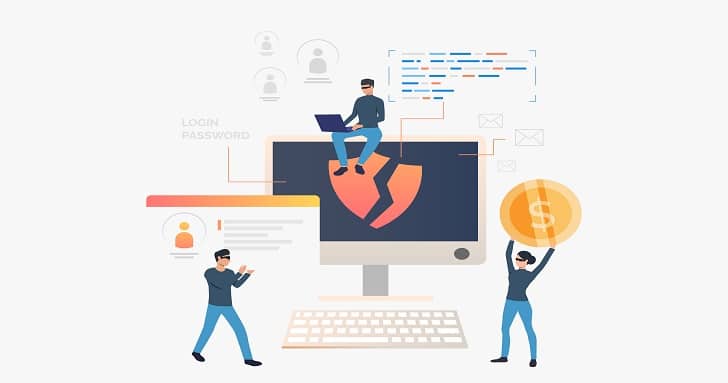Despite data security methods and strategies, data breaches and theft are reported on a daily basis, and hackers continue to discover new ways to target data.
As the website security improves and become more sophisticated, so as the tools used by website criminals. No one can tell how far hacking of vulnerable websites can go. To counter such an ill-will, website security measures have also gone cutting-edge. Now, it would simply be up to you to engage in experts who has the programs to detect early forms of breach and address it immediately.
Every business should plan for the unexpected, including a data breach, which may hurt your brand, customer confidence, reputation, and, eventually, your bottom line. Incident response refers to the process by which an organization tackles a data breach or cyberattack, including how the corporation attempts to limit the ramifications of the data breach. Finally, the goal is to properly manage the event such that harm is minimized, recovery time and expenditures are kept to a minimum, and collateral damage such as brand reputation is minimized. When data breaches occur, you need a quick, viable approach to get back online. An incident response breach can be your best weapon against data breaches. Here are some steps to respond to a data breach:
1. Make An Incident Response Plan
Well, no one knows when the breach could happen but it is better to stay prepared for it. A competent incident response plan is not just a mandatory requirement in many nations, but it also helps in proper management of a data breach that has not yet occurred.
You may engage foreign as well as native specialists with exceptional experience to assist you in developing a customized incident response plan that addresses the proper needs of your company and offers the security you require in the event of data breach or threat.
2. Run Your Incident Response Plan
Once you have devised a strategy and made an incident response plan, put it to the test on a regular basis. You might not do it just once. Nonetheless, when you already have a standard operating procedure and a workaround, it will just be easy-peasy, should a similar scenario happen.
A crucial benefit of an efficient incident response strategy is the early discovery of a breach. Conduct “lessons learned” exercises and exams to ensure continual progress. After the recovery phase, your firm should always convene a “lessons learned” meeting to fine-tune your data protection programmed and breach response approach.
When you’re lucky, your website strategist can investigate solely and come up with possible solution to whatever breach attack a virtual criminal is trying to put your website into. Be cautious of the process and always keep everything on record. This is to reassess and learn from the damage, moving forward.
3. Educate Your Employees
Keep your employees well informed of the data breach threats. A training program should be initiated to train employees to be on the lookout for threat approaches and develop a standard for dealing with them.
Employees should be trained to delete emails that appear spam or hacked without opening. Keep the account protection on and create a reaction plan explaining everyone’s duties in the time of the attack.
The reaction plan must be tested and practiced over and over again to ensure data security. Practicing the reaction plan will eradicate errors and your company will be better prepared for any type of data breach.
4. Keep Your Software Updated
Sometimes, you have a well-connected security system and still face data breach. This happens because the system is good but not updated. When you already have a technologically-advanced system, all you ever need to do is monitor your website, check on possible breach attempts, and address it with an apt resolution.
To prevent hackers and cyber criminals from breaching your data or information, the IT department of your company should ensure that all systems and software are well patched and up-to-date.
Keep your employees well informed of new threats in the market and devise a method for their identification. Address the vulnerable points of the network and perform security audits regularly.
Conclusion
There are several tools and approaches that may be used to help in incident response, and they are often classified according to their protection, identification, or response functions. The key to good event response is proper preparation and planning. Without a planned strategy and course of action, it’s sometimes too late to coordinate effective response actions after a data breach or incident. By allowing you to regain control of your systems and data as soon as a breach occurs, putting out the effort to build a comprehensive incident response strategy may save your company a lot of time and money.

